Navigation for This Way Up
Mars Missions
From This Way Up 5 September 2015
How We'll Live on Mars.
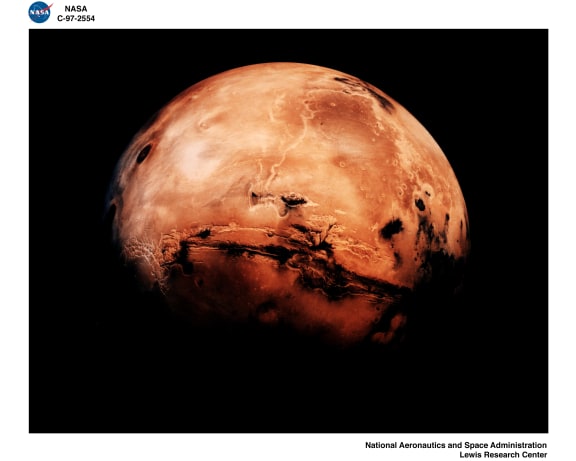

The northern hemisphere of Mars if marked by vast sandy plains, made up partly of red iron oxides. The jagged Valles Marineris canyon near the equator is nearly five miles deep and almost as wide as the United States. Image credit: NASA/Lewis Research Center
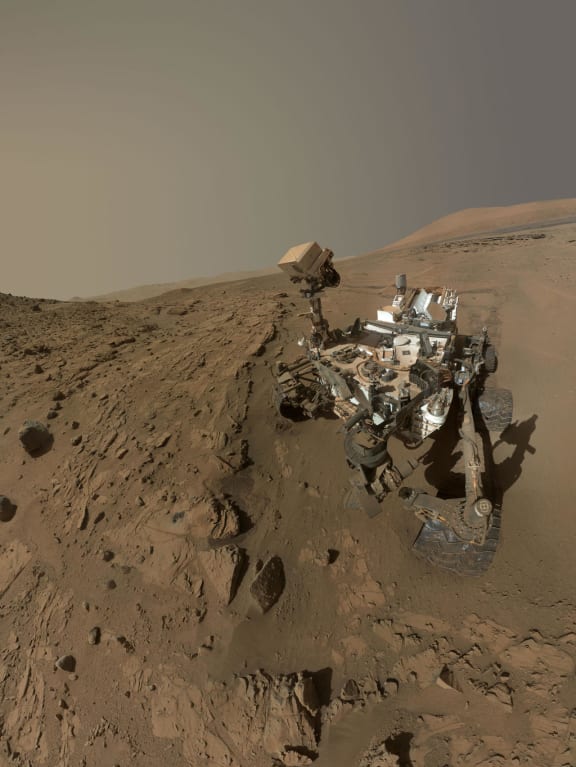

The Curiosity rover snaps a composite selfie while drilling a rock in a sandstone formation known as Windjana. Image credit: NASA/JPL-Caltech/MSSS


Wheel tracks mark Curiosity’s path over a Martian dune. Image credit: NASA/JPL-Caltech/MSSS


SpaceX designed the Dragon spacecraft for delivering crew and cargo to Earth orbit. CEO Elon Musk has a far larger and more complex spacecraft in mind for a Mars journey. Image credit: Courtesy of SpaceX
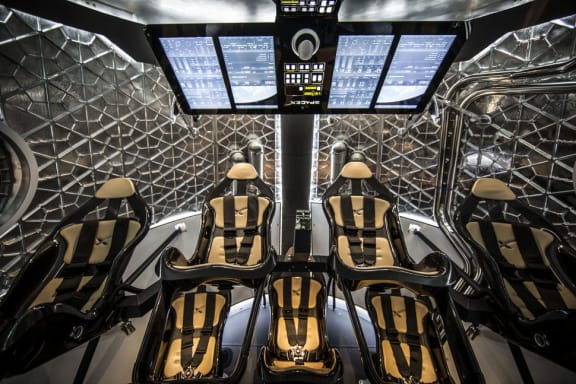

The Crew Dragon, Space X’s next-generation spacecraft, can carry seven astronauts. It is targeted to launch by 2017 under NASA’s Commercial Crew program. Inspiration Mars, a non-profit founded by Dennis Tito, has proposed using the Crew Dragon spacecraft for a 580-day husband and wife flyby of Mars in 2021. Image credit: Courtesy of SpaceX
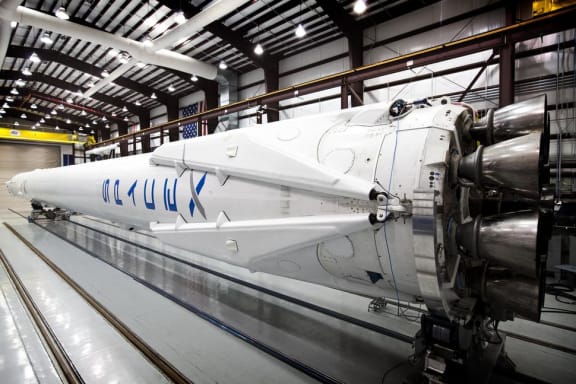

The SpaceX Falcon 9 rocket (pictured) and Dragon spacecraft completed six cargo trips to and from the International Space Station within the past three years. Currently in development, the Falcon Heavy rocket will be the most powerful rocket in operation and will be capable of launching manned flights to the moon and even Mars. Image credit: Courtesy of SpaceX


When a Falcon 9 rocket takes off, its first stage operates on nine Merlin engines designed by SpaceX. The rocket can lose up to two engines and still complete its mission. Image credit: Courtesy of SpaceX
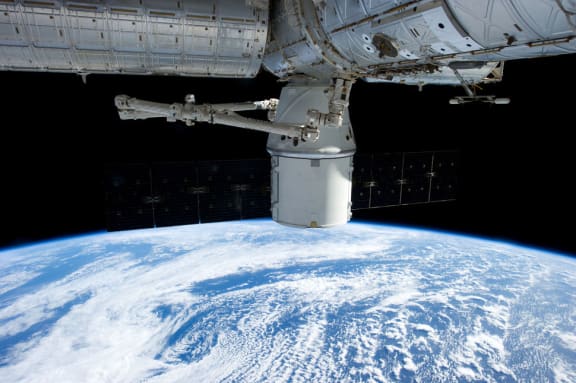

When the SpaceX Dragon spacecraft first berthed the with International Space Station in 2012, it proved that private companies could accomplish advanced feats of space travel that only governments had been able to do before. Image credit: Courtesy of NASA
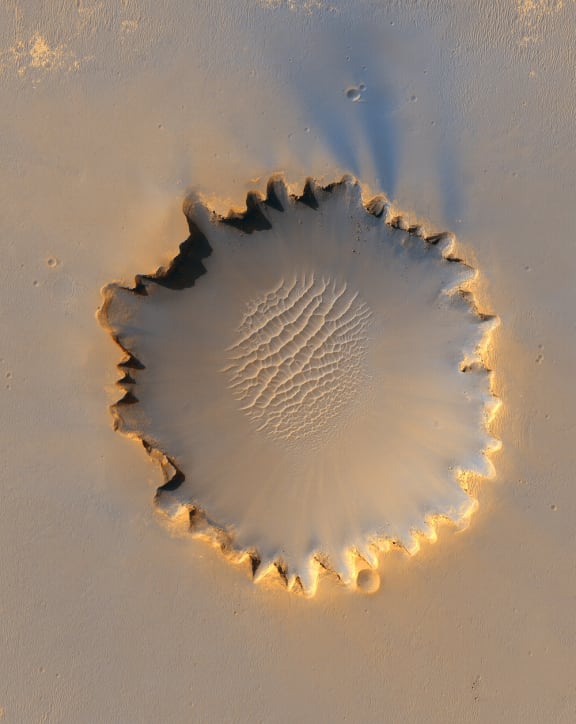

The half-mile-wide Victoria Crater contains so much geologic information that NASA’s Opportunity rover spent nearly a year inside it, examining exposed rock layers. The rocks revealed evidence that a wide network of groundwater shaped the Martian landscape long ago. Image credit: NASA/JPL-Caltech
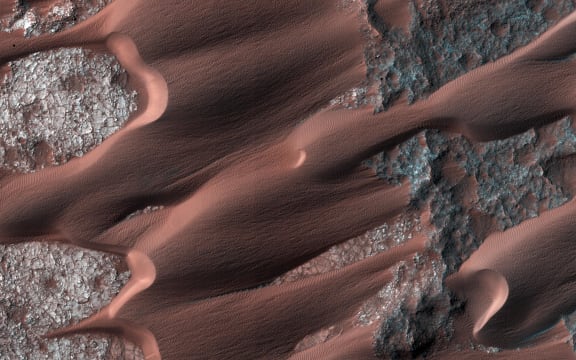

NASA tracks seasonal and annual variations in the Martian winds by watching active dune fields like this one. The dunes’ peaks can be up to a kilometer apart. Image credit: NASA/JPL-Caltech/ University of Arizona
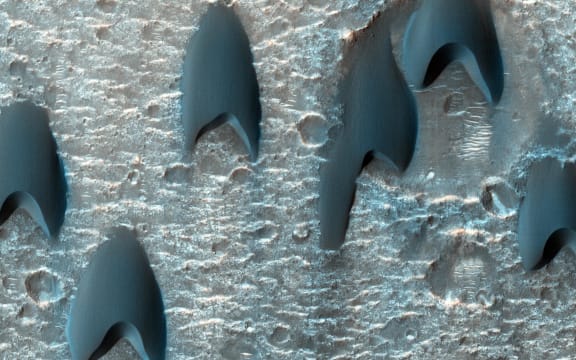

Wind shapes the dunes in this crater into a V-like formation, akin to migrating birds in flight. Image credit: NASA/JPL-Caltech/ University of Arizona
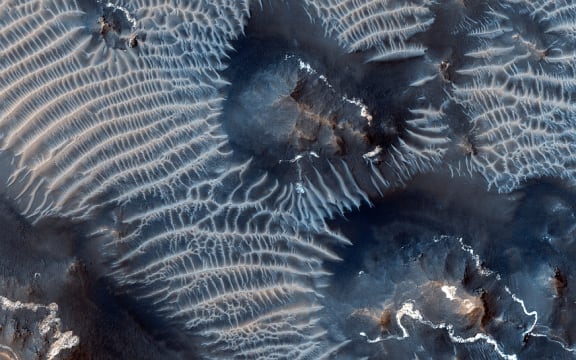

This rugged landscape in the magical-sounding Noctis Labyrinthus region of Mars shows a bright network of ridges juxtaposed with dark sand dunes. The dunes, which migrate across the planet’s surface with the wind, get their dark hue from iron-rich materials in volcanic rocks. Earth’s pale dunes are predominately quartz. Image credit: NASA/JPL/University of Arizona


Water ice makes up most of Mars’s northern polar ice cap, providing clear evidence that the planet does possess the (frozen) liquid of life. Image credit: NASA/JPL-Caltech/ University of Arizona
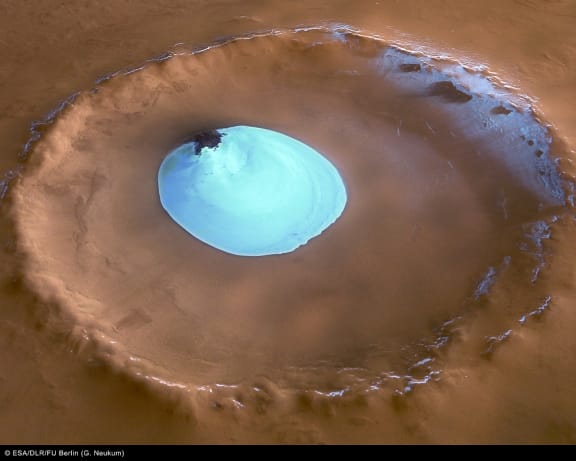

Water ice forms a pool in a thirty-five kilometer crater near Mars’s north pole. Image credit: © ESA/DLR/FU Berlin (G. Neukum)
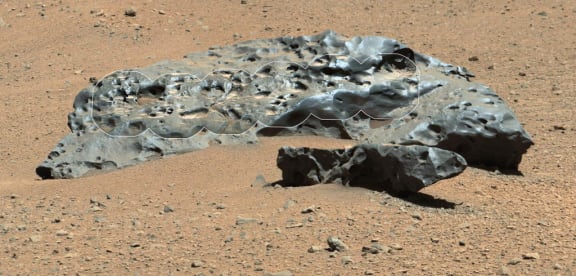

The Curiosity rover located this seven-foot-wide iron meteorite dubbed “Lebanon” on May 25, 2014. Image credit: NASA/JPL-Caltech/LANL/CNES/IRAP/LPGNantes/CNRS/IAS/MSSS


The tailings around this sampling hole look like cat litter, and for good reason. They contain smectite clay, a key litter ingredient. Smectite-rich soil readily absorbs water and can support plant life. Image credit: NASA/JPL-Caltech/MSSS
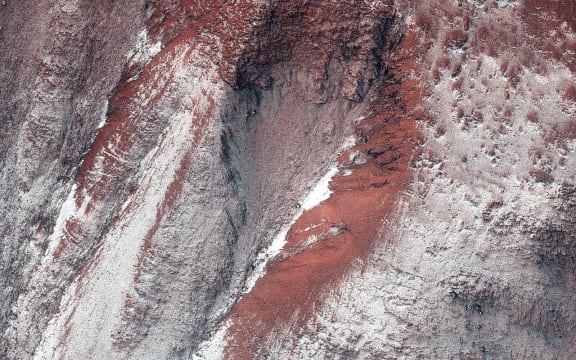

The frosty guillies on Mars, dusted mainly with frozen carbon dioxide (dry ice), but also a touch of frozen H20, are further evidence that the planet has water. Image credit: NASA/JPL-Caltech/ University of Arizona
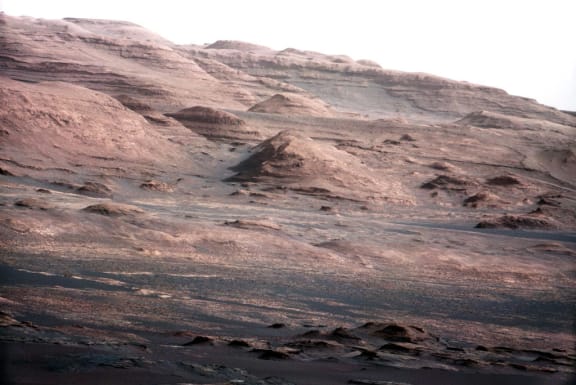

Sedimentary rock strata frame the planet’s Mount Sharp and represent millions of years of geologic history. Image credit: NASA/JPL-Caltech/MSSS


A little speck of white light in the Martian twilight, just left of center, is our Earth. Image credit: NASA/JPL-Caltech/MSSS/TAMU
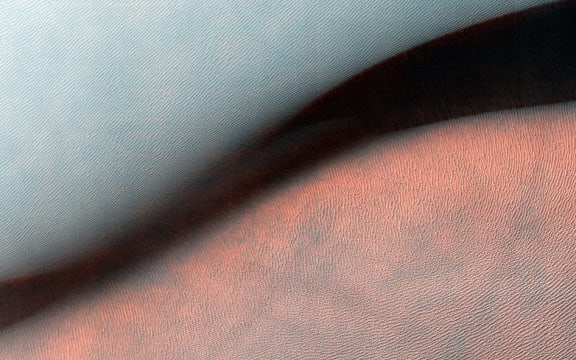

Light and shadow accentuate the outline of a draa, the largest class of Mars’s sandy, wind-forged landforms. This draa has a wavelength of more than half a mile and probably formed over thousands of years of more. Image credit: NASA/JPL/University of Arizona
The images in this gallery are used with permission and are subject to copyright conditions.